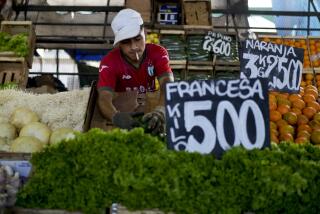Where’s the beef? Indians don’t want to know
For a cow, it doesn’t get much better than India.
Wander the streets surrounded by vegetarians, enjoy being adorned with garlands and treated with god-like reverence as you look forward to dying of old age.
But danger lurks, even in paradise.
A dirty little secret that most Indian politicians don’t discuss is the thriving cow smuggling trade from their Hindu-majority nation, home of the sacred cow, to Muslim-majority Bangladesh, where many people enjoy a good steak. The trade is particularly robust around the Muslim festival of Eid.
India has outlawed cattle exports, but that hasn’t prevented well-organized traffickers from herding millions of the unlucky beasts each year onto trains and trucks, injecting them with drugs on arrival so they walk faster, then forcing them to ford rivers and lumber into slaughterhouses immediately across the border.
On the hot, flat Murshidabad plains bridging the border, Sarvender Ghankar, 24, a member of India’s Border Security Force, pointed toward Bangladesh. It’s a few hundred yards away, but the line is unmarked. Farmers wander back and forth. But to hear him talk, the divide is as secure as Ft. Knox.
“There used to be smuggling, but now the border is completely sealed,” Ghankar said, sporting camouflage fatigues, shiny black boots and a 20-round semiautomatic rifle. “Soon we’ll even have a fence.”
Area residents have a different take.
“The border guards are in on it, both in India and Bangladesh, and take bribes to look the other way,” said Yasin Mullah, 55, a Murshidabad shopkeeper and cow owner. “Smuggling is rampant these days with all the money and growing population.”
Estimates suggest 1.5 million cows, valued at up to $500 million, are smuggled annually, providing more than half the beef consumed in Bangladesh.
The cows come from as far as Rajasthan, about 1,000 miles away. Many trade hands several times en route.
At the Panso market in Jharkhand state, an interim stop about 300 miles from the border, the 15,000 or so cows passing through each week fetch about $100 apiece, local vendors say.
Animals that arrive exhausted are injected with Diclofenac sodium, a banned anti-inflammatory drug, to energize them. Most of the traders are Muslims. Many of the drivers and handlers are Hindus. At the border, crossings are usually done at night.
Most cows pass through West Bengal state, which shares a 1,300-mile border with Bangladesh. The state’s communist government maintains a neutral line on religion, allowing cows to be openly slaughtered and traded.
Other Indian states accuse West Bengal of encouraging the illegal trade, said Haripada Biswas, a state assemblyman from Jagadal district, a stance he sees as hypocritical.
“Delhi is biased against cow killing, but beef is very delicious,” Biswas said. “And many of the illegal cows arrive from cow-loving states. Those guys act all principled, and quickly blame us, but don’t seem above making a tidy profit.”
The profits can be significant. A $100 medium-size cow in Jharkhand is worth nearly double that in West Bengal and about $350 in Bangladesh. Indian residents along the border complain that the markup also attracts illegal migrants from Bangladesh, who steal cows at night and dart back home.
In a bid to stem the rustling, the Murshidabad local government announced a cow-licensing system in 2007. Cows were issued photo IDs. Branding or ear tags were nixed as hurtful to cows and easily altered by rustlers.
But enforcement has been lax, and the ID system is largely ineffective, residents said.
“You can put a picture of your cat, dog, your elbow in the photo and no one looks closely,” said Mullah, who has opted not to register his two cows.
India has mostly turned a blind eye to the smuggling problem. In part, it’s worried that any mention could inflame religious tensions between Hindus and Muslims, said Sreeradha Datta, an analyst with New Delhi’s Institute for Defense Studies and Analyses. Hindus consider cows sacred because of references in ancient religious texts.
“It’s too political,” she said. “And every pocket is being lined, with a trade of this magnitude.”
Bangladesh has little incentive to raise the issue publicly either, analysts said, given that it taxes the smugglers and is quite happy not to pay India the duties that a legal trade would entail.
Mohammad Jalal Uddin Sikder, professor of migration at the University of Dhaka in Bangladesh, believes that the cross-border business should be legalized to reduce the number of deaths in clashes; about 100 cattle traders and border guards are killed each. The two nations met to discuss the idea in 2008, but Sikder acknowledges that legalization is unlikely anytime soon, given longstanding distrust between the two sides.
One thing is clear, he said: The trade isn’t going away.
“My grandmother’s house is in Bangladesh, and her field is in India,” he said. “There are 21 rivers along a border that’s [2,700 miles] long. It’s just not possible to stop.”
Anshul Rana of The Times’ New Delhi Bureau and special correspondent Baldeo Sharma in Jharkhand contributed to this report.
More to Read
Start your day right
Sign up for Essential California for news, features and recommendations from the L.A. Times and beyond in your inbox six days a week.
You may occasionally receive promotional content from the Los Angeles Times.






